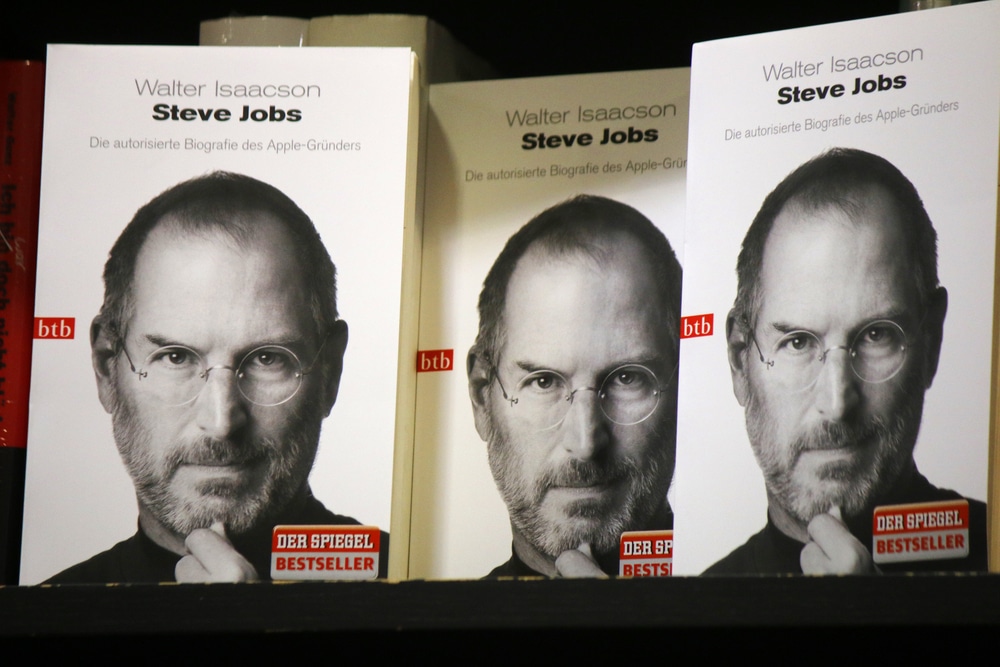
– Watch this as a 10-minute video
– Listen to this as a podcast.
A lofty dream is just a dream, if it doesn’t become a VISION.
A vision must turn into an enduring CONVICTION to be actionable.
A conviction without laser focused execution into a PRODUCT or SERVICE is still a dream.
A product or service without BUYERS is a failure.
To have many long term buyers requires BRAND FOCUS throughout design, manufacturing, sales and marketing.
Brand focus must be on CUSTOMER EXPERIENCE, at all stages, from all levels of an organization, and at all times, to sustain the birth and growth of a Unicorn, like Apple.
All these steps sound logical and sequential, right? – Yes and No.
Steve Jobs put it upside down, by STARTING with user journey and user experience at the very beginning, from day one, BEFORE making any products, BEFORE engineering, even BEFORE ideation of a product. “Design over engineering” was not just a design decision but a guiding philosophy for Apple’s brand focus. It was Steve Jobs’ initial conviction. What led Apple to where it is today, is Steve Jobs’ design principle governing both the simplified functionality and the look and feel of every device. From the inception of any Apple product, to design, then engineering and manufacturing, to every detail of the EXPERIENCE DESIGN for every act of opening the box, to lifting the product out of its cradled nest…“Design over engineering”.
But designed for whom? For the convenience of profit making or corporate management? For whatever the “priority” in the minds of engineers? For the ease of manufacturing and distribution? – NO!
Fortunately, Steve Jobs was an artist (unlike the programming nerd Bill Gates who approached computers solely from an engineer’s mindset). Jobs had a Zen follower’s appreciation for simplicity. That explained his love for working with the top designer, Johny Ive, in establishing customer-centric products and experience design.
Steve Jobs is a “seducer”, in a sense. He knows how to shoot the cupid’s arrow straight to the hearts and minds of the END USERS – the CUSTOMERS. Apple’s elegant and flawlessly executed experience design triggered the “love at first sight and first touch” of the end users, making them attached to the devices ( iMac, iPod, iPhone, even earbuds) as if the devices were their pets, toys, and part of their lives.
This passion for “design over engineering” did not come to him in a flash of genius but from a painful experience. In the biography “Steve Jobs” by Walter Isaacson, he recounted that in the very early days when Steve Jobs and Steve Wozniak were tinkering with a crude computer, they found a shop owner who was willing to pay for it. After they made it work and took it to the guy who had promised to pay, Steve saw the astonished look on the guy’s face when he first saw the crude, ugly, unpolished computer. Steve Jobs never forgot that look on the guy’s face.
“People DO judge a book by its cover,” “We may have the best product, the highest quality, the most useful software etc.; if we present them in a slipshod manner, they will be perceived as slipshod; if we present them in a creative, professional manner, we will impute the desired qualities.” This was Point #3 in the very earliest version of “The Apple Marketing Philosophy”, after Point #1: Empathy, an intimate connection with the feelings of the customer, and Point #2: Focus: Eliminate all of the unimportant opportunities, in order to do a good job of those things that we decide to do. (Isaacson, Walter. Steve Jobs. New York: Simon & Schuster, 2011, p. 78).
Steve Jobs’ secret sauce for growing a garage startup into Apple can be summarized into these three elements:
Vision: Steve Jobs never thought of Apple as a mere startup. This is Steve’s vision, in the 1997 Apple’s “Think Different” commercial: “The people who are crazy enough to think they can change the world are the ones who do.” He envisioned Apple as a powerful brand before he even had a name for it.
Indeed, he changed the world, first with Apple computers in the 1980’s, then with iPhones in the 2000’s. He changed the world by relentless execution of experience design over engineering, with laser brand focus on customer experience.
To have a good laugh, here is a parody video about the complete opposite of the minimalist design of the iPod, if done by Microsoft (hint: complicate, complicate, and complicate even more): https://www.youtube.com/watch?v=EUXnJraKM3k (Although the video is old, the truth is evergreen.)
By the way, who needs an iPod these days? But the iPod filled the needs of customers at that time, AND was so fun to use! Again, a toy based on experience design for the end users, not just a clunky device. Steve Jobs knew all along that the iPod would die as soon as his much more revolutionary iPhone was born. But he needed cash for Apple, he needed to prove to investors for his much bigger dream for the iPhone. He got it by laser focusing on executing small products that were the children of the same brand vision. Today, even an obsolete iPod remains in our fond memories with Apple brand characteristics: simplicity, elegance, fun to use. I don’t recall any of the Microsoft products dying a similar memorable death.
Since what the MARKET wants is not the same as what the PEOPLE in the market want – the customers, consumers, end users, I wish Steve Jobs added this third sentence: The market does not know what it wants. WE tell the market what it wants, because we already know what customers want, and our products fill the need in the market.
Like true lovers, one knows what the other wants and feels BEFORE the other realizes it. Right before people realized the need for personal computers and hand-held devices that combine phone, computer, camera, calendar, … all in one, Apple had ANTICIPATED people’s needs and their user experience. Before the needs were manifested, Apple had already designed, engineered, and delivered the products that the customers had no choice but to fall in love with. Opening an elegant package for an iPhone was like opening a box with an engagement ring in it. How could you resist? That’s how Apple beat others to the market: with customer centric brand focus and meticulous execution of every detail for their customers’ brand journey.
The bottom line is: more than prioritizing user experience, Apple lets user experience LEAD everything: design, engineering, manufacturing, customer support … then the products just sell themselves.
In today’s AI revolution, too many startups are driven by the desire to make loads of money, instead of by passion, conviction, and doing things right. Too many are ignoring AI experience design (AIXD) for customers and the end users, thus subjugating user experience and humanity to poorly engineered AI tools. If you are on this path, it will backfire sooner or later.
Now, more than ever, is the time for both AI startups and investors to learn from Steve Jobs’ secret source for Apple’s enduring success. The three elements of an unicorn apply universally, no matter what products or services.
Don’t engage in the herd mentality by copying what everyone else is doing. A true entrepreneur leads with originality, like Steve Jobs. You want to be in “Founder Mode”.
But you do need guidance to see the whole picture as well as your own blind spots. Contact our AIXD experts at 10 Plus Brand to help you determine your customers’ needs and user experience.
Ask yourself these questions:
What is my vision?
What specific product or service am I focusing on?
What is the user experience for my product or service?
Does my product or service delight end users, and make them fall in love at first sight?
Does my product or service continue to sustain users’ love at their 2nd sight, 3rd, 4th, and on and on?
Can you anticipate your customers’ needs?
What does my brand stand for?
If you need expert help doing a brand audit or a brand strategy consultation, we at 10 Plus Brand are here for you, no matter what stage of growth you are at. Contact Us.
====================================================================================
– To stay in the loop, subscribe to our Newsletter
– Download free Ebook
Please don’t forget to like it, comment, or better, SHARE IT WITH OTHERS, – they will be grateful!
(About 10 Plus Brand: In addition to the “whole 10 yards” of brand building, digital marketing, and content creation for business and personal brands. To contact us: 1-888-288-4533.)
– Visit our Websites:
Phone: 888-288-4533
– Find us online by clicking or follow these hashtags:
#Founder Mode
